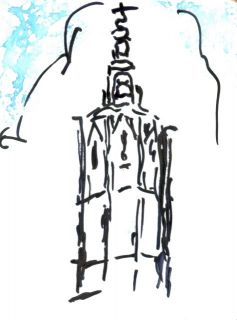 |
||
© Hispania Nostra (2018) © Campaners de la Catedral de València (2024) campaners@hotmail.com Updating: 19-04-2024 |
||
The bells are the only ancient instruments that preserve its original sound: they sound as when they were manufactured. Each one has a specific tone that can be heard alone, with others or against other bells.
They are complex instruments which are composed of bell tower and bell. Part of these instruments are immovable assets which could be under same protection as the church where they are located. And they are also in part movable assets which could be listed or not in official records. In any case, an age above hundred years would always imply legal protection.
To ensure their protection and enjoyment by future generations, bell towers and bells must be in use. It is necessary that they are being rung in a proper way by bell ringers who know well how to do it and they must be kept and restored by professionals who will always attach to a restoring project that has been previously agreed. Any intervention on the bells can affect their tone as these are cast using different techniques depending on the age or place where they were manufactured and each one must be treated individually.
The ringing of the bells is a language that was fully understood by the local citizens and surrounding areas. As every language it had a syntax that was recorded in church books and ‘consuetas’ when it was related to religious festivities but also in civil celebrations (such as the ‘Mistery of Elche’). There were other bell sounds that could not be written and recorded but they were transmitted orally and were known by all the citizens: deaths, emergency, call to arms, fire, market, assembly, etc. This information could then be extended to all neighbourhood cities.
Smaller human groups but with common interests (religious communities, military, schools, factories, ships, agricultural, etc) have also used the bell’s language to mark the time of different chores, leisure, prayers, meals, entrances or exits… smaller communities even had bell sounds that identified particular persons. Even though these uses have gradually been disappearing they are still recognized for those who used them.
Public clocks, some of them with a machinery which is part of science’s history, meant an advanced public service as they set the time for citizens who had diverse tasks and times. The bells and tunes of the clocks are a successful mechanization of some of the bell’s tasks.
Nowadays this language that crossed distances and reached other people and communities has been replaced by the telegraph, telephone and, recently, the Internet or even public speaker systems. However, they all lack the language of the bells which also are musical instruments used and financed, in a good measure, by the population. As it happens in any particular spoken language with the music and with local uses there are different ways to ring a bell, different types of bell towers and all together shape their identity. This identity is shared, overall, by all Western societies who also have their own bell ringing.
They all form part of a cultural heritage associated to local communities that must be respected and protected since they are movable and immovable assets and intangible assets associated to the music and languages
Noises disturbed in ancient times as much as they do today and that is the reason why the ringing of the bells must be regulated by laws which protect Heritage and local uses.
The civil and professional use of the bell towers must be protected and promoted generally by local organizations who are proud of their own traditions and who work on them on their free time. The bell ringers, as musicians do, understand their instruments, enjoy playing and taking out every tune and sound out of them. They also enjoy playing together and helping to transmit and keeping alive a very ancient musical language which is also very intuitive and of great beauty.
The mechanical ringing of the bells must be regulated based on the local rules and traditions. The different sounds must be identified and must be rung in each particular occasion. They should never be rung with no reason or with a different purpose. This would be the case of some bells that have been electrified and only ring the same tune regardless the circumstance.
It should not be forgotten the need to promote the study and preservation of the instruments (the bells and the bell towers), the different tunes and the study of old books in churches and other associated registers. Besides, all the instruments must also be inventoried as well as the ringing repertory which is incredibly wide.
 |
||
© Hispania Nostra (2018) © Campaners de la Catedral de València (2024) campaners@hotmail.com Updating: 19-04-2024 |
||